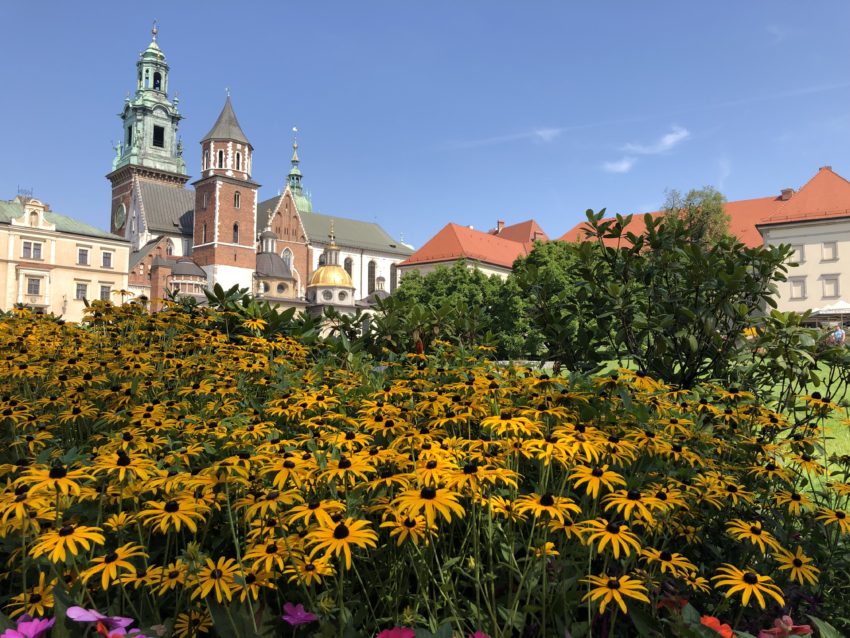You’ve got to love a city when two can eat a hearty meal in a city centre restaurant, consume two beers each and be charged a total of less than £30 for the pleasure. Welcome to Krakow…
OK, our choice of eatery wasn’t exactly Michelin-starred but, while Restauracja Polska must have had a particularly unimaginative branding consultant, it was friendly enough, comfortable and the food was good. It wasn’t the only place where the bill left us pleasantly surprised either. Poland’s second city Krakow is a ridiculously cheap place to visit, especially for those of us used to sky high prices in London, and there’s plenty more going for it besides its generosity towards our wallets. Its UNESCO World Heritage old town is a beauty, its castle is an attractive blend of religious and regal buildings (pictured top) and the city’s wartime history is compelling.
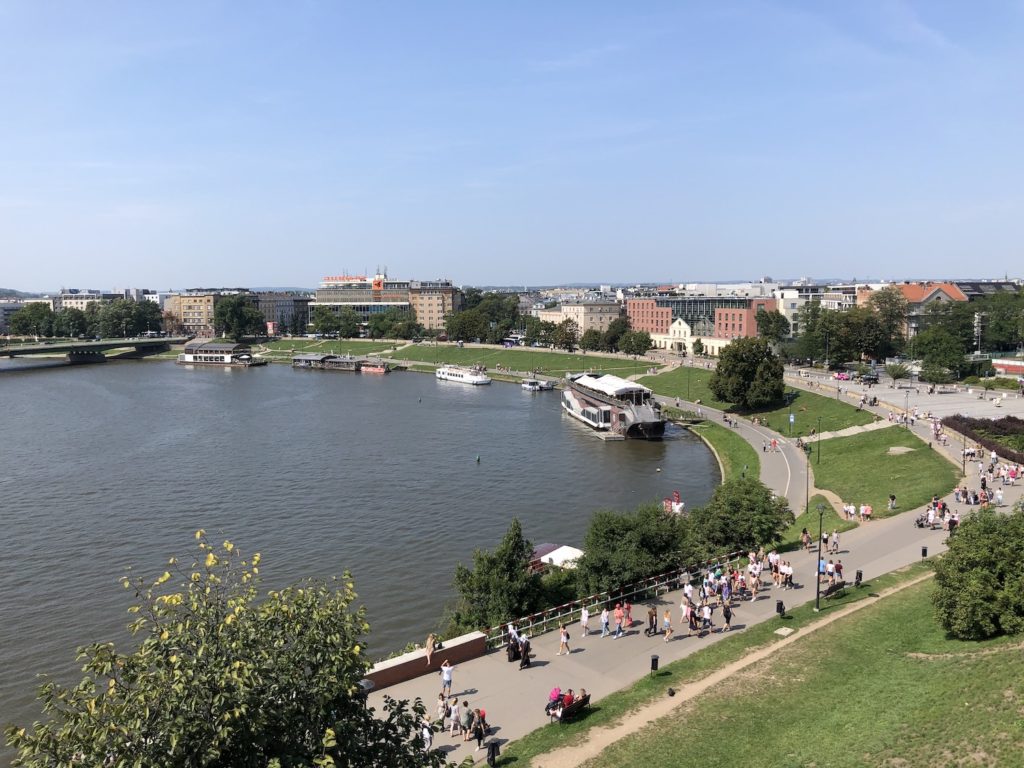
We flew in with easyJet on a Friday evening in August, which is probably not the best of months to visit for Krakow heaved with visitors. Long queues formed at ticket booths and coach tours irritated us no end, blocking museums and pavements. This throng of people, surging down the colourful and fascinating streets of the city centre, proved good business for touts, the numerous tour guides in their ubiquitous electric golf buggies and folk offering pub crawls to the many stag and hen parties. I don’t think I’ve been anywhere quite so busy in my life, or faced so many sold-out attractions. We were literally the last two allowed into the Schindler Factory Museum on the day we explored Krakow’s war years.
Back to the Friday night, though, and we dropped our bags at the Metropolis Design Hotel (close enough to the city centre/tiny room/modern) and spent the hour or two left of the night in the rooftop bar of the nearby Sheraton Hotel, nursing drinks while the Vistula River flowed past and police and little boats searched in the darkness for what looked like a stray drunk who’d fallen into the fast-flowing waters. The castle on Wawel Hill loomed ominously over the scene, lit atmospherically.
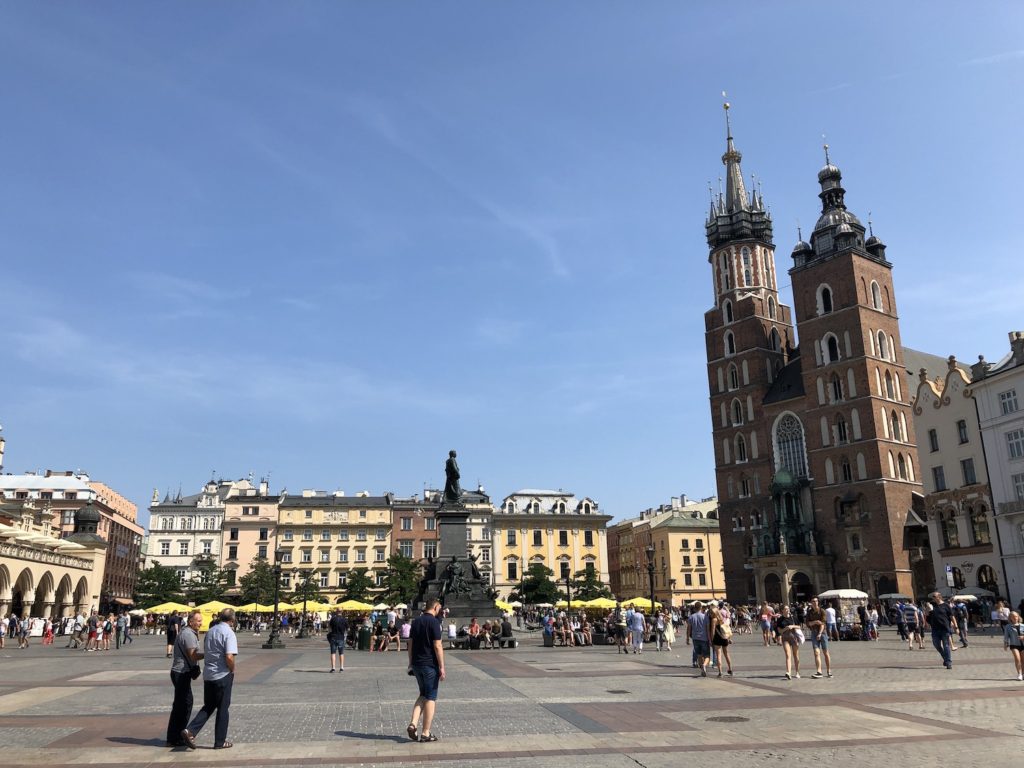
Saturday morning saw the sun shining and the temperature crept towards the late 20s as we went for a walk around Krakow’s historic old town, which is a remarkable survivor. The street plan dates from the 13th century and many buildings date back centuries, even if their frontages have been rebuilt many times. I find it astonishing that it remained reasonably intact following the Second World War, unlike Poland’s capital Warsaw. There’s also something Austrian about Krakow that I wasn’t expecting but shouldn’t have been surprised about, because the empire loomed large on the horizon for years and the city was once part of the Austrian Imperial domain. A moat surrounded the town in the dim and distant past but was eventually filled in and the old city is surrounded now by pleasant, shaded parks that stand in its place.
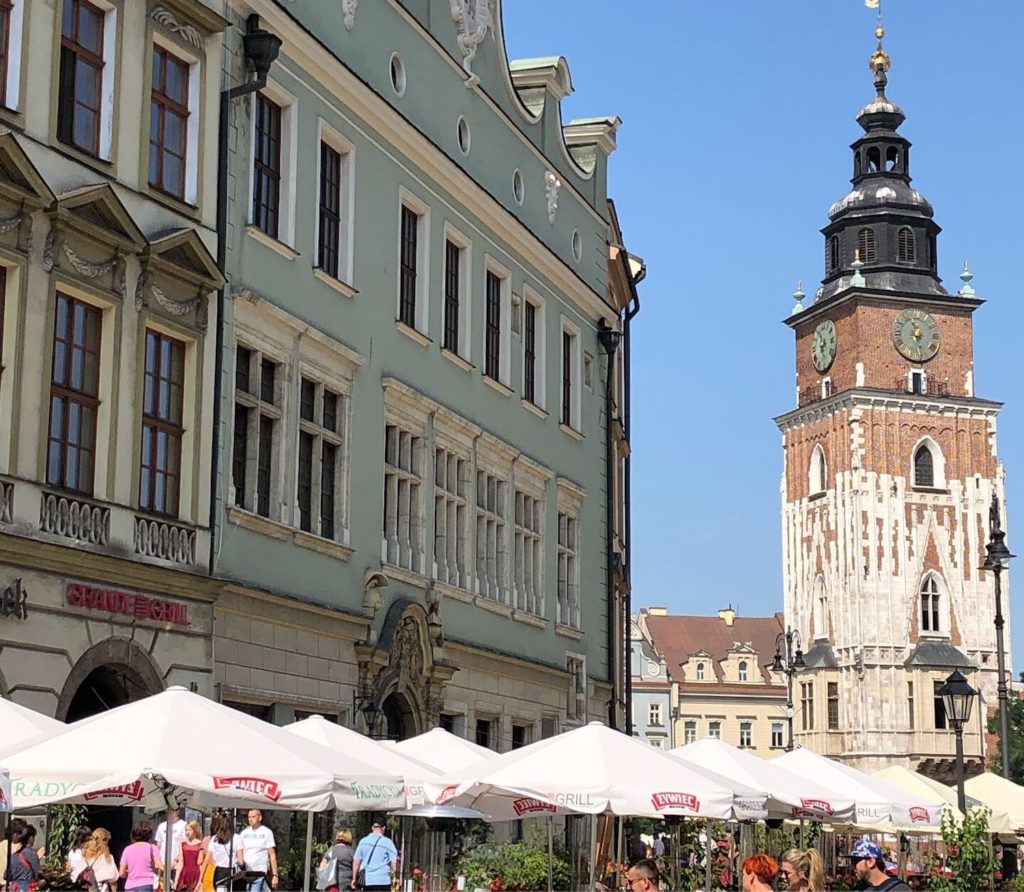
The streets are handsome, full of churches both modest and towering, as well as modern temples to consumerism – shops, bars and restaurants. The central square, Rynek Glówny, is vast, a wonder of urban planning and full of splendid architecture, including baroque, renaissance and neo-classical. A little chapel stands in the shadow of the ancient tower of a now demolished town hall and the monumental red-brick St Mary’s Church, from which buglers ring out the hour – a hangover from the days when citizens needed a reminder of the city gates being opened and closed. Beyond the square and like many other European cities, the streets are lined with palaces, mansions and apartment blocks, grand civic buildings and religious structures by the dozen. Wherever we looked, if it wasn’t a church, it was a monastery or diocesan offices, a statue of a priest or the Krakow bishop Pope John Paul II. Poland was once one of the most multi-cultural nations in Europe but now it’s a Catholic stronghold.
Despite the crowds – and it was easy to escape them away from the main thoroughfares – Krakow is an easy city to explore on foot. Many streets are pedestrianised, others too narrow to be useful to rat-runners. The biggest menaces are the golf buggies and motorcyclists. We wandered up and down the streets, found attractive squares and a small stretch of surviving city wall.
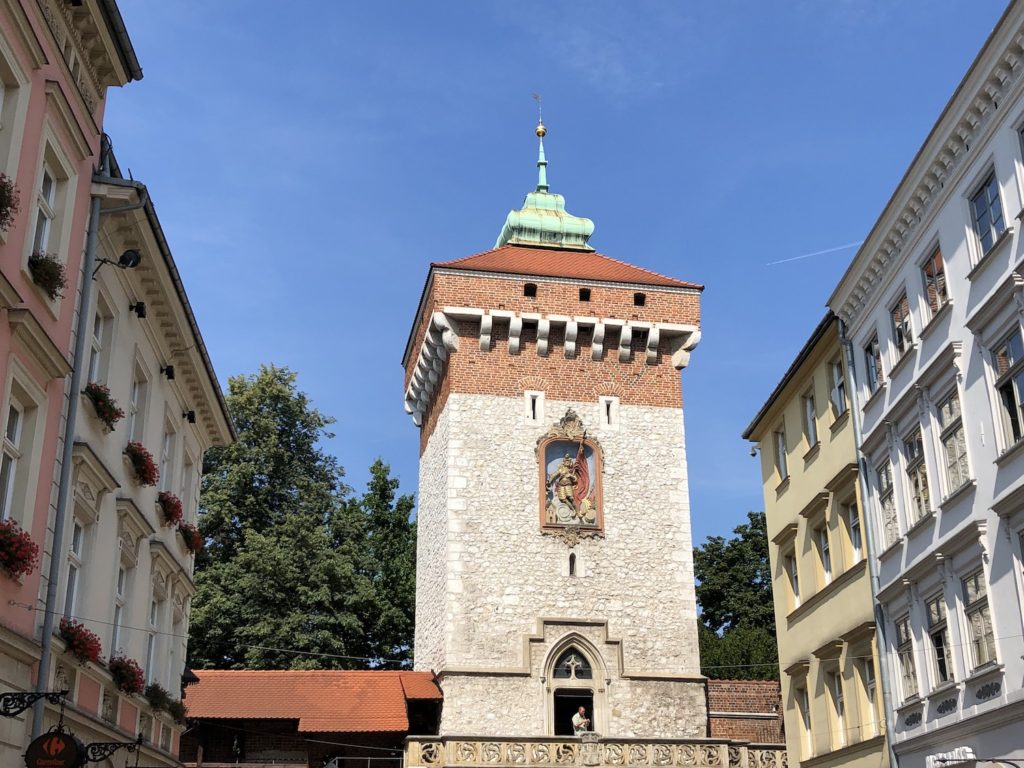
At the centre of Rynek Glówny is the historic Cloth Hall, much rebuilt but always a market in one form or another over the centuries. Today it’s mostly devoted to tourist tat, folk taking photos of its attractive interior and coach parties. We managed to get a ticket to the Rynek Underground museum below its much-trodden floors, developed out of an ambitious archaeological dig that swallowed up most of the square a few years back. The museum reveals just how much the ground level has risen over time and in the gloom we explored old market stalls, roads, footpaths and the foundations of ancient buildings. It was fascinating, very well done and interactive, providing a useful insight into Krakow and the people who lived and worked there many centuries ago. I just wish it hadn’t taken us at least through trips round the square to find the entrance…
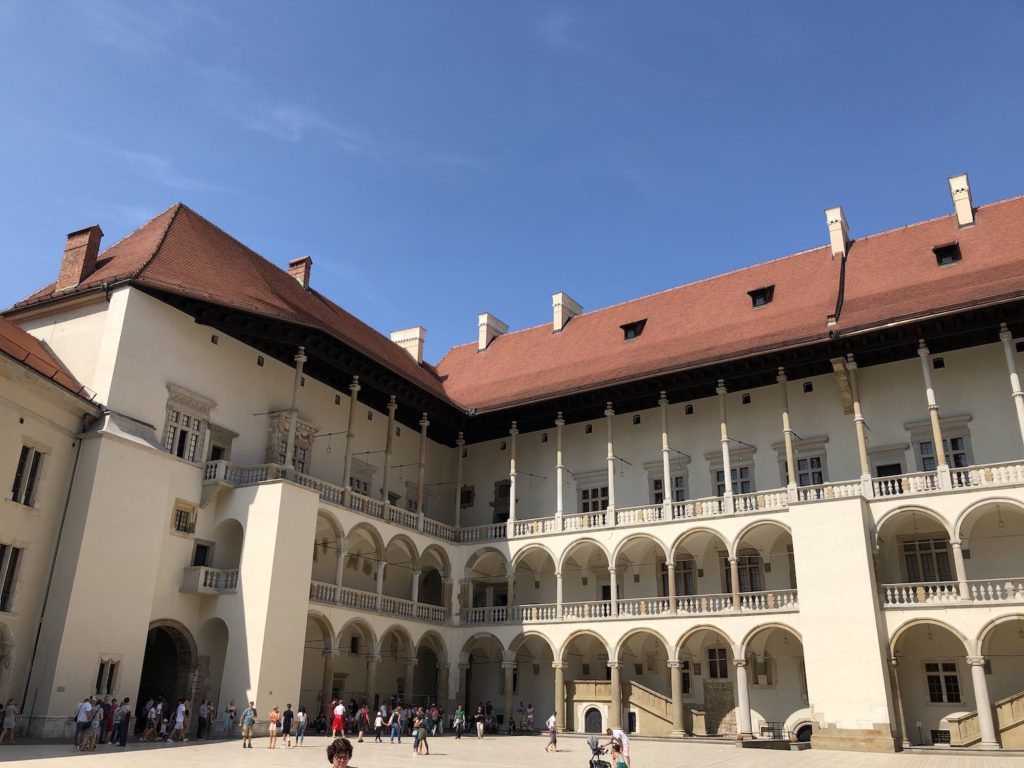
After lunch we traipsed up to the castle on Wawel Hill, enjoying the views across the city from its ramparts. Long the centre of power and defence in Krakow, it’s a community all of its own, full of buildings, attractively planted grounds and the immense cathedral (an excuse for more Pope John Paul II). The state and royal apartments in the 16th century Italianate palace date from a time when Krakow was the capital of Poland, before that particular distinction went to Warsaw. There was restoration work going on when we visited, covering much of the exterior with scaffolding, but the interiors were untouched, grand and cool, with marble floors, high ceilings and priceless furnishings, clocks, tapestries and pictures. We toured the state rooms but had to return the following morning to take a guided tour of the royal apartments, because all the tickets had been sold. Our guide was a voluble type, informative and friendly but it was a pity that the castle’s recent history wasn’t really touched upon. Then again, Krakow’s years as capital of the Nazi General Government and the seat of its psychotic ruler Hans Frank, is not exactly a period the locals would want to ponder for long.
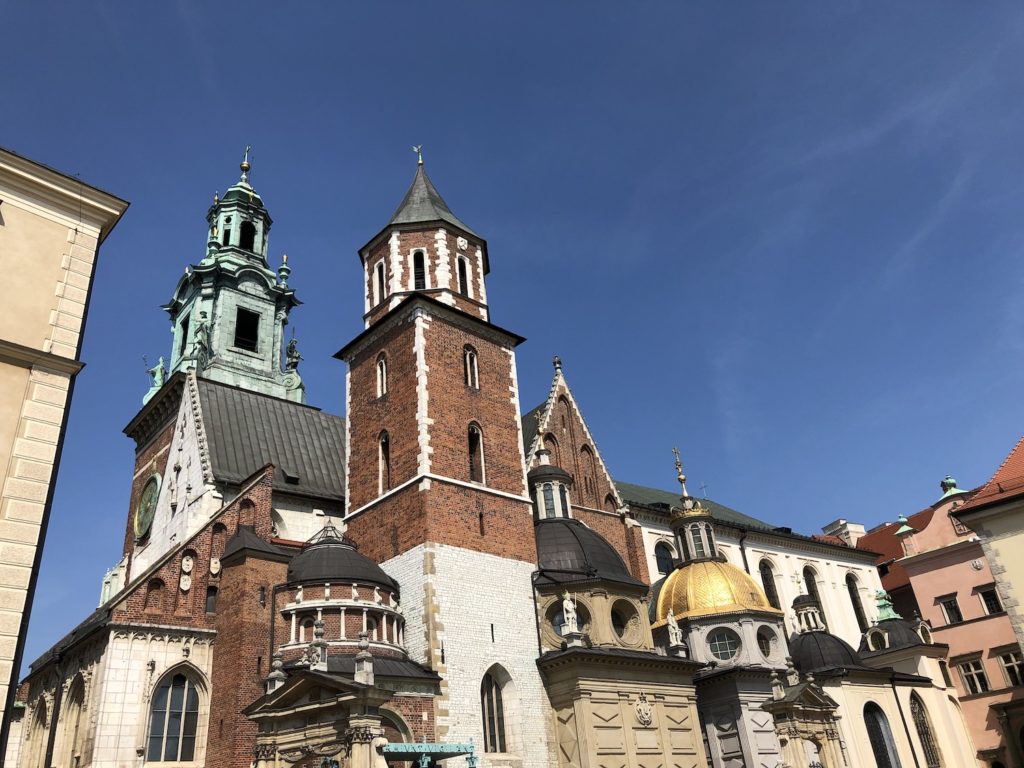
Footsore, we walked back to the hotel and had a few late afternoon beers in the garden while a local youth vomited extravagantly from a nearby balcony, clearly still suffering the after effects of a heavy night out. We had a rather more sedate evening planned, in the historic but funky district of Kazimierz to the east of the castle. For a long time this area was home to a once-thriving Jewish community but with the arrival of the Nazis they were shipped unceremoniously to a ghetto over the river, and thence to the horrific concentration camps beyond the city. After the war, some Jews returned and today there are synagogues and other reminders of the community’s past and more recent revival. We walked along the river to Kazimierz as the sun set, locals gathered on the banks, some canoodling, many drinking from cans and bottles, before turning away up quiet neighbourhood streets, past yet another monastery, yet another church.
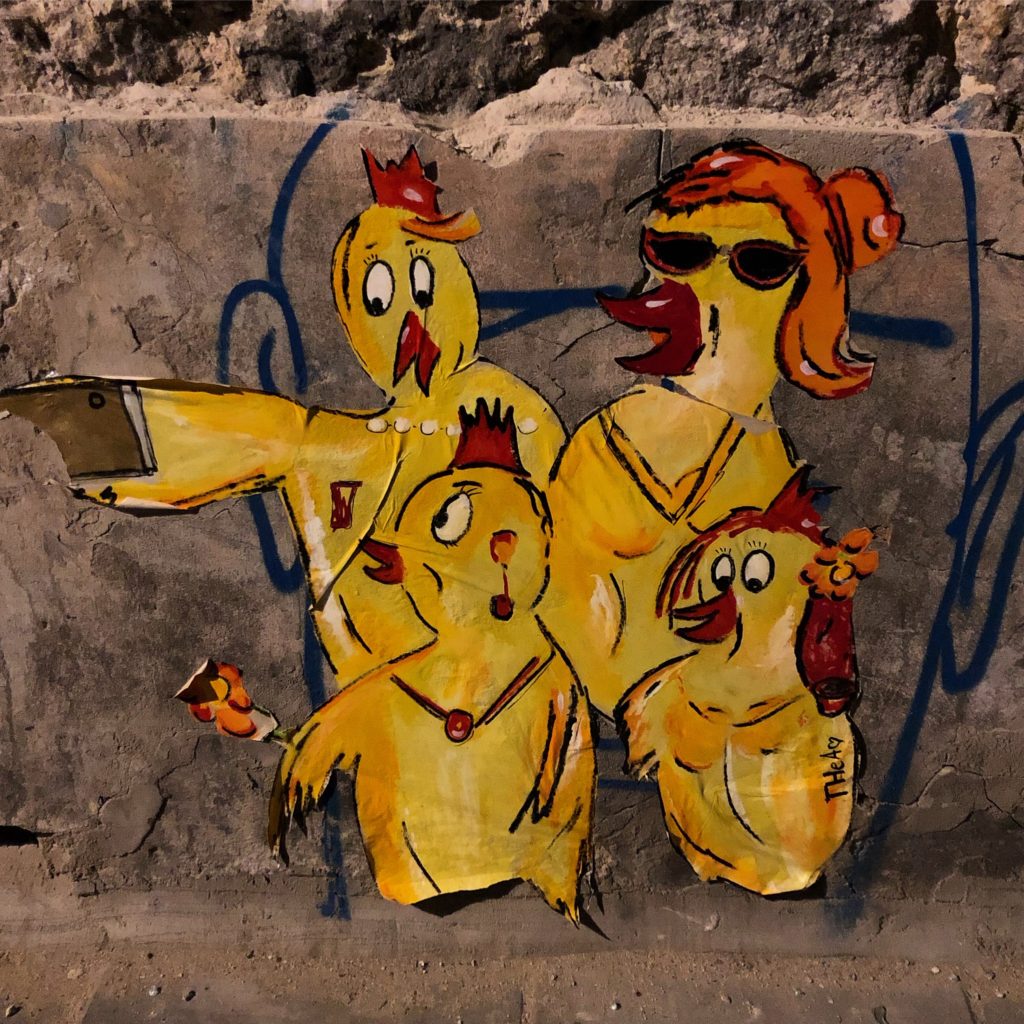
Kazimierz is Krakow’s Shoreditch or Friedrichshain, earthy, famous for its cool bars, craft beer, street food and clubs. Unlike the old town, it’s edgy and street art reigns, plenty of its buildings look down at heel. Independent traders dominate the shops rather than global chains and it all makes for a wonderfully atmospheric district. This is where we ate at the aforementioned Restauracja Polska and, the next night at the slightly more upmarket but still ludicrously cheap Kuchnia u Doroty. We drank in craft beer pubs and in the popular garden of Mleczarnia on ul Meiselsa. It was as close to a night out in Berlin as I’ve got without being in the German capital and I loved it. The only bore was the walk home but we stopped a couple of times for additional refreshments, finally at one of the bars-cum-vessels moored on the river. Cheesy 70s music poured from the speakers and couples of a certain age, dressed like refugees from the 90s (I assume unwittingly), danced under the influence of too many drinks. We stood in the bar while drunks and gangs of blokes or herds of girls came on board in search of beer, prosecco and a shag. We left fairly promptly, bemused and bemoaning the lack of talent among Polish men.
Night and day in Krakow didn’t disappoint despite that obvious lack of talent. It was our first taste of Poland, but it won’t be our last…

